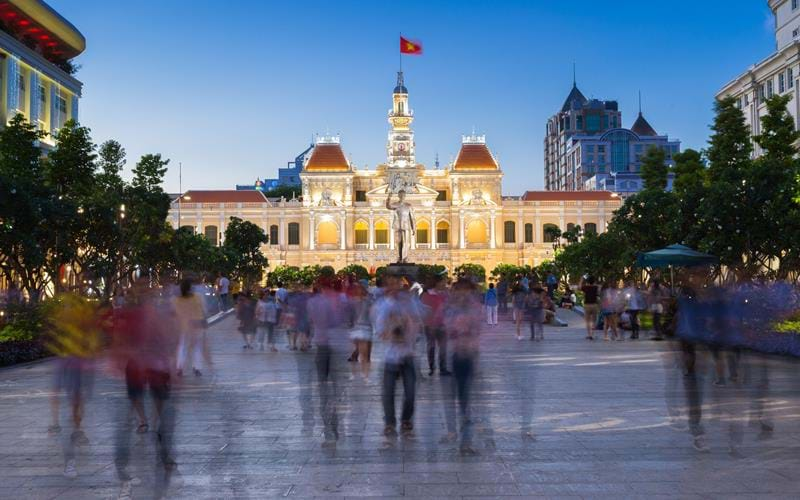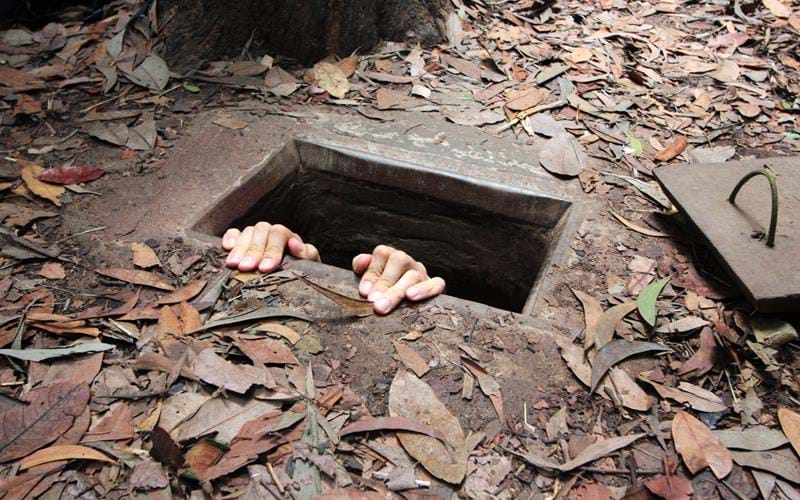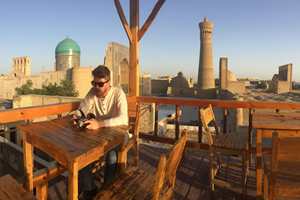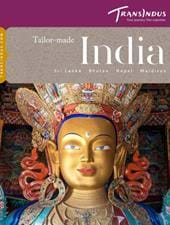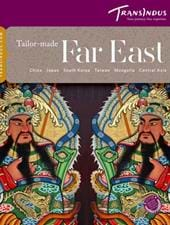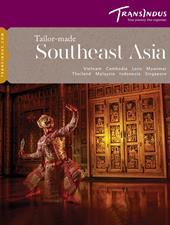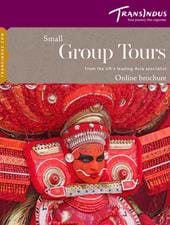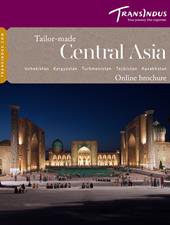Group Tour 18 days from £3075 per person
Places Visited: Phnom Penh, Siem Reap, Luang Prabang, Hanoi, Halong Bay, Hue, Hoi An, Ho Chi Minh City
From the grand temples of Angkor and the laid-back town of Hoi An, to the islands of Halong Bay, vast stretches of the Mekong Delta and ancient monasteries of Luang Prabang, our Discover Indochina tour promises to be the trip of a lifetime. Start at Phnom Penh, the capital of Cambodia, where you can learn about the tragic recent history of Cambodia and the subsequent steps which the resilient and brave Cambodians have taken to rebuild. Then, fly to Siem Reap, your base to visit the impressive Angkor Wat and spend two nights in the capital of Cambodia. Continue to Luang Prabang and then journey onward into scenic Vietnam.
After sightseeing in Hanoi and an overnight cruise in Halong Bay, travel southward along the Vietnamese coast to the charming towns of Hue and Hoi An whose sights showcase fine art and architecture. Explore Ho Chi Minh City and take an excursion to the Cu Chi tunnels as well as the Cai Be floating market.
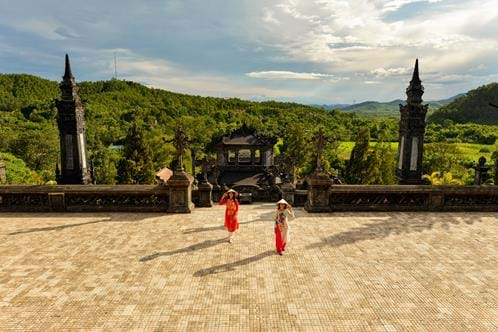
Holiday Types
Cultural Holidays Family Holidays River Cruising Holidays
Travel Arrangements
- Group Size 4-12 people
- Internal Travel Arrival & Departure transfers, Internal travel by road and air
- Accompanying Guide English-speaking guides. Accompanying tour escort when minimum group size is achieved
- Accommodation 17 nights
- Meal Plan Breakfast daily. Lunch on day 10. Dinner on days 5, 10
Itinerary for Discover Indochina
Phnom Penh
You will be met at Phnom Penh airport and transferred to the Anik Hotel or similar for two nights.
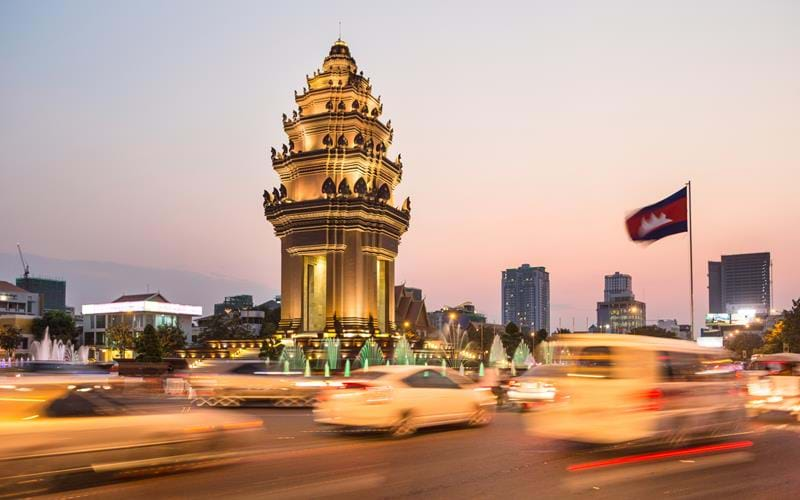
The Cambodian capital doesn’t feel in quite so much of a rush to embrace the future as its counterparts elsewhere in Southeast Asia. High-rise buildings are beginning to spring up, but they’re still outnumbered by colonial-era shophouses and the flaking facades of French-style villas.
Accommodation Options
Phnom Penh
Explore the sights in and around this capital city, set on the banks of the mighty Mekong River which has the atmosphere of a provincial French town. Visit the Royal Palace and its silver-tiled pagoda. See Khmer art and sculpture from different periods of Cambodian history in the National Museum. Later visit the Central Market. In the afternoon visit the Genocide Museum and Killing Fields.

Begin your sightseeing with a visit to the splendid Royal Palace and adjacent Silver Pagoda, whose central shrine holds a Buddha made from an enormous emerald. Then admire the impressive collection of antiquities at the National Museum before joining our guided tour of Boeung Keng Kang Market, where you’ll sample local delicacies such as pungent durian, and dragon fruit.
In the afternoon visit the school in the centre of Phnom Penh which housed the notorious S-21 prison. Now maintained as a memorial to the victims of the Khmer Rouge, the buildings comprise the Toul Sleng Genocide Museum, where exhibitions of clothing, human remains and photographs document the atrocities perpetrated within its walls – a sobering testament to the horrors of Cambodia’s recent history.
Accommodation Options
Phnom Penh - Siem Reap
Fly to Siem Reap in the morning. Check into The Aviary Hotel or similar hotel for three nights. In the afternoon, visit Banteay Srei temple, one of Angkor’s most significant structures, built in the 10th century.

A provincial market town until the tourism explosion of the post-Pol Pot era, Siem Reap is the gateway to Angkor. Over a million visitors pour through here each year and most stay in or around the town. The upside is a wide choice of quality hotels, restaurants and bars, as well as a plethora of shopping opportunities.
A few pockets of authentic Cambodian atmosphere also survive in the local fresh produce market, and numerous performances of Khmer Apsara dance, music and shadow puppetry are staged in the evenings. Visitors interested in traditional Cambodian arts and crafts may also visit workshops of the renowned Artisans Angkor company, which has spearheaded the revival of silk-making, stone and wood carving, lacquering and painting in the area.
Banteay Srei show-stealers are the voluptuous female deities standing in intricately framed niches around the base of its main sanctuary towers.
Accommodation Options
Siem Reap
Visit Ta Phrom temple in the morning. In the afternoon see the well-preserved carvings at Angkor Wat. Witness the spectacular sunset in the countryside.

The greatest of all the shrines created by the Khmers – in fact, the single largest religious building anywhere in the world – is Angkor Wat. Dedicated to Vishnu (the Hindu deity of whom King Suryavarman II considered himself a reincarnation), the temple is a vivid testament to the power, ambition and unbridled narcissism of the region’s ancient rulers.
Ta Prohm is a hauntingly beautiful temple where the roots of giant banyans and strangler figs enfold much of the stonework, creating scenes little changed since the French adventurer Henri Mouhot re-discovered Angkor in the 1850s.
Accommodation Options
Siem Reap
In the morning, we will visit Angkor Thom, the ancient royal city of the Khmer Empire with its centre piece, the Bayon temple. The afternoon is at leisure. Enjoy the performance of the Phare Cambodian circus, with dinner in the evening.

The remains of the Khmers' last great city, Angkor Thom, stand just north of Angkor Wat, enclosed by massive laterite walls and a broad moat. From its centre soars the central sanctuary tower of the mighty Bayon temple, which is perhaps best known for the colossal face-towers that adorn it. No one knows for sure who, or what, the smiling faces represent: they may have been images of the emperor himself, or guardian deities.
Also at Angkor Thom is the famous ‘Elephant Terrace’, the plinth of a now disappeared audience hall whose sides are decorated with striking bas-reliefs of parading pachyderms. Jayavarman VI used to sit on this great platform to view his armies returning from victorious battles, such as the one with the Cham dynasty that took place on nearby Tonle Sap Lake in 1177 AD, also featured in the carvings, which are regarded as the finest to have survived from the Khmer era.
Accommodation Options
Siem Reap - Luang Prabang
This morning take a short drive through the countryside to Tonle Sap Lake, stopping to visit a local village en route. Board a local boat to see floating schools, police stations and markets. Late afternoon fly to Luang Prabang. On arrival transfer to Villa Santi or similar for two nights.
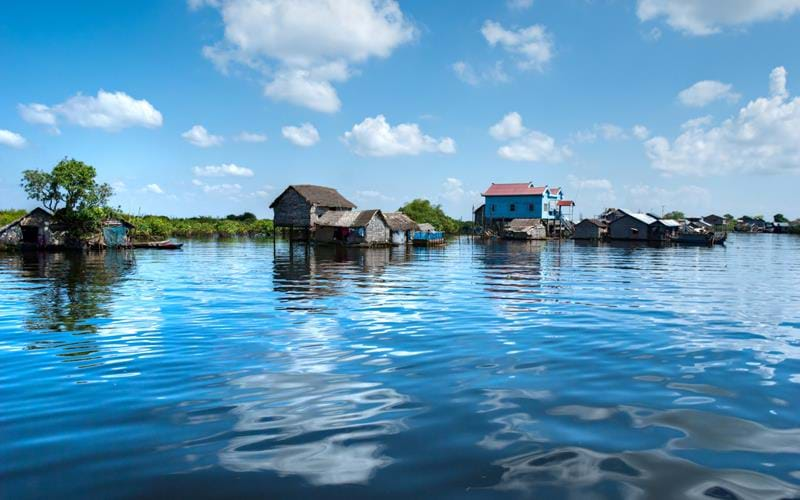
The largest freshwater lake in Southeast Asia, Tonle Sap, supports a population of over a million people, the majority of whom live from rice cultivation and fishing, in stilted or floating villages around its shoreline. During the annual monsoons the lake swells up to six times as the waters of the Mekong, unable to pass through the relatively narrow channel at Phnom Penh, back up and flood the plains further north. The restoration of flow into the Mekong, at the end of the rainy season, is celebrated by the Water and Moon Festival, when thousands participate in canoe races and religious rituals on the water.
Accommodation Options
Luang Prabang
Visit Talat local market and explore this veritable treasure-trove of beautiful temples and historical monuments including its many pagodas and the National Museum, formerly the Royal Palace. In the afternoon take a walk through the town to see its beautiful French-colonial buildings and the local market. View the town and its surroundings atop Mount Phousi at sunset.

Enfolded by low, wooded hills, Luang Prabang languishes amid a gauzy tranquillity on a peninsula in the Mekong. Long regarded as the country’s preeminent cultural and religious capital, the town served for 15 centuries as the abode of Lao royalty and retains a delightfully traditional feel. Stucco French villas and wooden colonnaded houses, festooned with scarlet bougainvillea and the foliage of overhanging mango and jackfruit trees, line its quiet streets, along with a wealth of delicately gilded temples and monasteries.
Luang Prabang’s elegant religious and colonial-era buildings provide a wonderfully picturesque backdrop for the many stylish cafés, restaurants and boutiques that flank its avenues. Grandest of all the old piles is the former Royal Palace – a graceful fusion of Lao and European styles housing a glittering throne room and exhibitions of heirlooms.
Accommodation Options
Luang Prabang - Hanoi
An excursion by boat to the Pak Ou caves today, located in the limestone cliffs at the confluence of the Mekong and Nam Ou rivers. These caves are full of Buddha images of various styles and sizes that have been collected over centuries. Take an evening flight to Hanoi, the capital city of Vietnam. Transfer to Silk Path Luxury or similar.
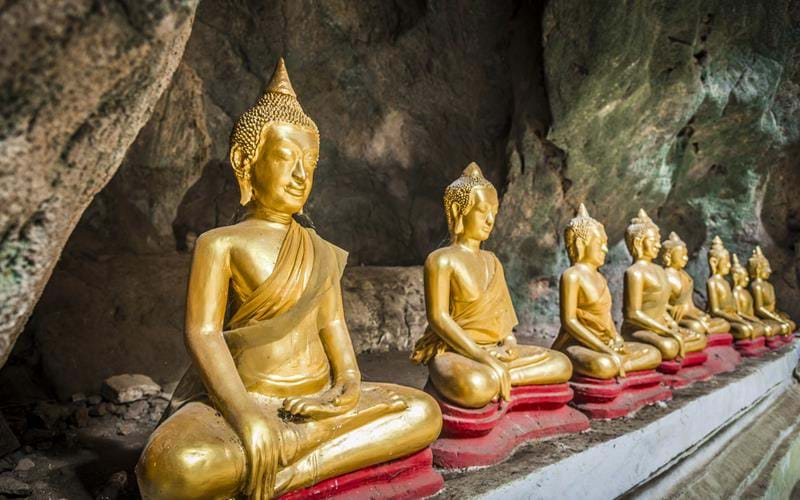
25km north of Luang Prabang, at the spot where the Nam Ou and Mekong River meet at Ban Pak Ou, these caves, Tham Ting and Tham Theung, set in a dramatic limestone cliff are filled with a myriad of Buddha icons. The photogenic lower cave is visible from the water and is a popular place for locals to burn incense and offer prayers. To see the majority of the Buddha statues however, you’ll need to climb up to the upper cave by torch light, about 50 metres into the rock face.
Accommodation Options
Hanoi
A full day tour starts with a visit to the Ho Chi Minh Mausoleum and Museum, the One Pillar Pagoda and the Temple of Literature – Vietnam’s first university, established in the 11th century. Also visit the Ngoc Son temple, on the Hoan Kiem Lake. In the afternoon visit take a walk through Hanoi’s Old Quarter to glimpse bustling local life. Enjoy a Water Puppet show in the evening.
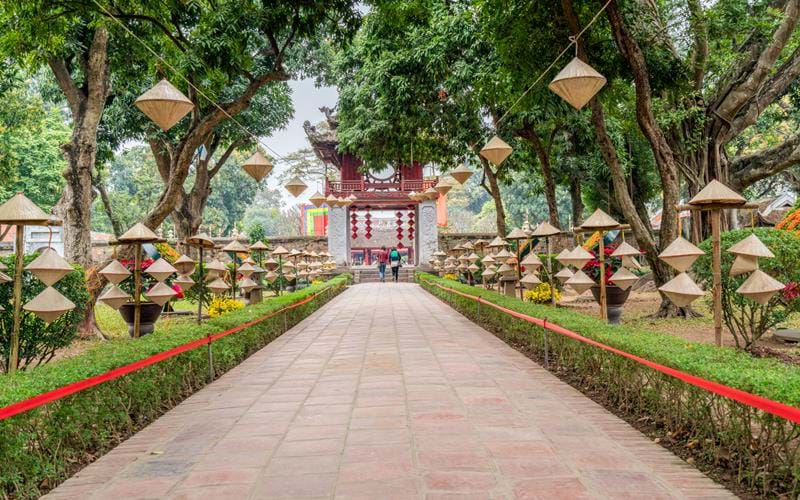
Vietnam’s charismatic capital, on the Red River, may be expanding and modernizing at an extraordinary pace, but it’s a great city to explore. Surrounded by parks and tranquil lakes, the core is a medieval Old Quarter – one of the most atmospheric square kilometres in all of Asia – where traditional craftsmen ply their trade in narrow alleyways lined with antique shop-houses.
Uptown, colonial mansions and relaxing cafés flank the boulevards and leafy shores of Hoan Kiem Lake. Still, the prime attraction in the broader city is Ho Chi Minh’s Mausoleum, where the Great Leader’s remains are embalmed in a sombre marble tomb. Other iconic landmarks include the 11th-century One Pillar Pagoda, and the Temple of Literature; a feast of medieval Vietnamese architecture erected in 1070 AD.
Accommodation Options
Hanoi - Halong Bay
A morning drive to the World Heritage Site of Halong Bay. Board a traditional junk for an overnight cruise (Peony Cruise or similar). As you set sail into the bay, pass limestone islands and visit Sung Sot cave. Trekking and swimming at Titov island.

Rising in majestic fashion from the northern shore of Vietnam, the limestone formations of Halong Bay create a unique, spellbinding landscape. Around 2,000 islands, islets, outcrops and towering mountains, draped in thick vegetation and riddled with grottos, soar above the green-blue waters of the Gulf of Tonkin.
A fleet of converted junks guide visitors around the finest viewpoints and beauty spots, the most popular of them grouped on the western side of the bay, which is best visited on an overnight excursion from Halong.
Accommodation Options
Halong Bay - Hue
Visit Luon cave in the morning, disembark and transfer back to Hanoi. Stop at a pottery village and enjoy some snacks and tea. Take the evening flight to Hue and check in to Eldora Hotel or similar.

One of the most ancient cities of Vietnam, Hue was the imperial capital throughout the 143-year reign of the Nguyen Dynasty. Famed for the piety of its monasteries and the splendour of its royal palaces and mausoleums. Hue endured a great deal of damage during the Indochina wars, but extensive restoration work has revived much of its cultural legacy, including the famous moated Dai Noi citadel on the banks of the brilliantly named Perfume River.
Accommodation Options
Hue
Visit the Imperial tombs of Tu Duc, the longest reigning Vietnamese Emperor, and Khai Dinh, the last monument of the Nguyen dynasty. The afternoon sightseeing includes a tour of the Old Imperial City, which is modelled after the Forbidden City in Beijing. Also visit the Thien Mu Pagoda before taking a boat back to the hotel on the Perfume River.
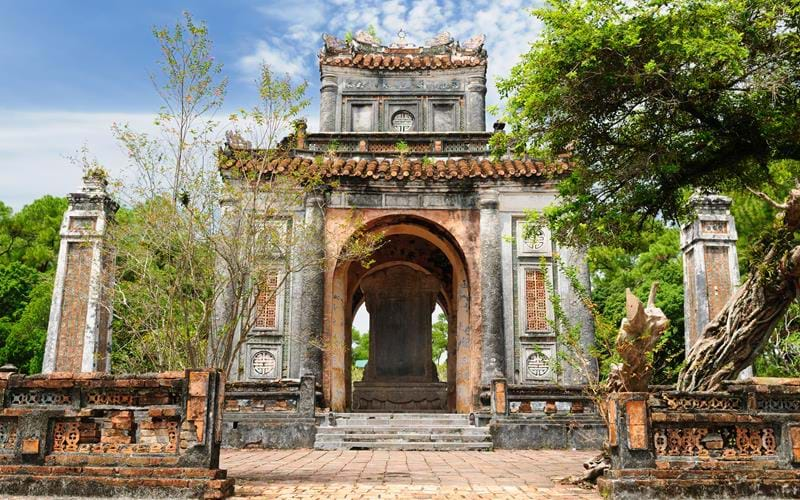
One of the finest historic monuments in Southeast Asia, Hue’s Imperial City was where the Nguyen Emperor, his Queen and five ranks of concubines, servants and eunuchs resided amid fabulous pomp in the 19th century. Open courtyards and lawns divided the various buildings, which are all richly decorated and surmounted by beautiful glazed tile roofs. Some of the rulers who resided in it are entombed in suitably extravagant mausolea on the outskirts of town, around the banks of the Perfume River, where the tombs of Tu Doc and Khai Din are the standout monuments.
Accommodation Options
Hue - Hoi An
In the morning drive to Danang (3-4 hours), crossing the picturesque Hai Van pass. Also have the chance to visit the Cham Museum. Continue the drive south to Hoi An, past the Marble Mountains before checking in at the Hoi An Central Boutique Resort or similar for two nights.
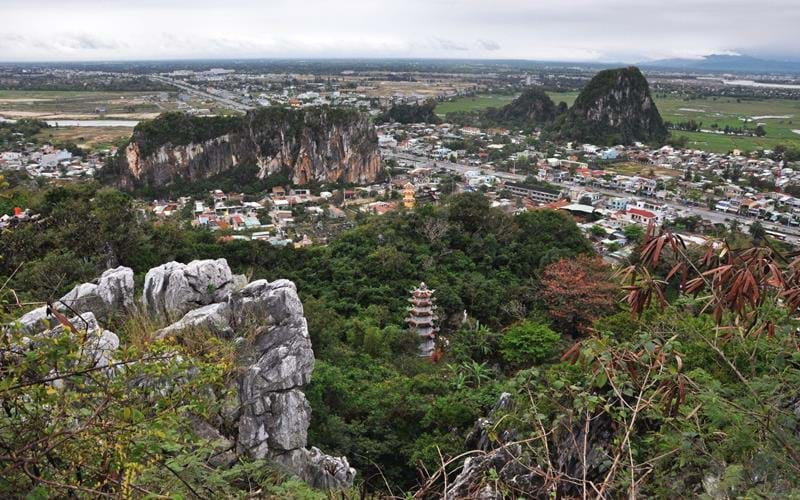
With the beautiful, pristine sands of ‘China Beach’ on the eastside, and a maze of local cafés, street food stalls and markets on the west, there’s plenty to occupy you in the seaside city of Danang.
Drive past ‘Marble Mountain’, a cluster of peaks bristling with ancient temples, pagodas and Buddhist statues, before arriving in Hoi An. Spend the evening, soaking up the magical atmosphere of Hoi An’s Old Town, with its hundreds of paper lanterns and lively bars. Housed in a stately colonial building, Brother’s Café has a particularly lovely candlelit garden.
Accommodation Options
Hoi An
Enjoy a morning walking tour of Hoi An, once a prosperous trading post. Spend the afternoon at leisure.

A thriving port before it was eclipsed by nearby Danang, Hoi An’s Old Quarter preserves a unique cultural legacy spanning more than three-hundred years of colonial trade. Wandering its grid of 17th-century streets, you’ll pass some fine examples of old tube houses, Chinese pagodas, elaborately decorated community halls and shrines, and a wonderful Japanese covered bridge, as well as a restored French enclave.
Accommodation Options
Hoi An - Ho Chi Minh City
Fly from Danang to Ho Chi Minh City, the largest of the Vietnamese cities. Visit Cu Chi Tunnels, outside the city. Stay at the Northern Charm or similar for three nights.

During the Vietnamese War, Vietcong guerrillas evaded capture by digging an extensive tunnel networks, protected by hidden entrances. One of the largest of these secret underworlds survives at Cu Chi village, just north of HCMC, where you can explore a small section of a staggering 125 miles (200km) of cavities carved on various levels.
Accommodation Options
Ho Chi Minh City
Enjoy a morning walking tour of Chinatown. In the afternoon take a city tour to see the former Presidential Palace now known as the Reunification Hall, the War Museum and the Notre Dame cathedral.
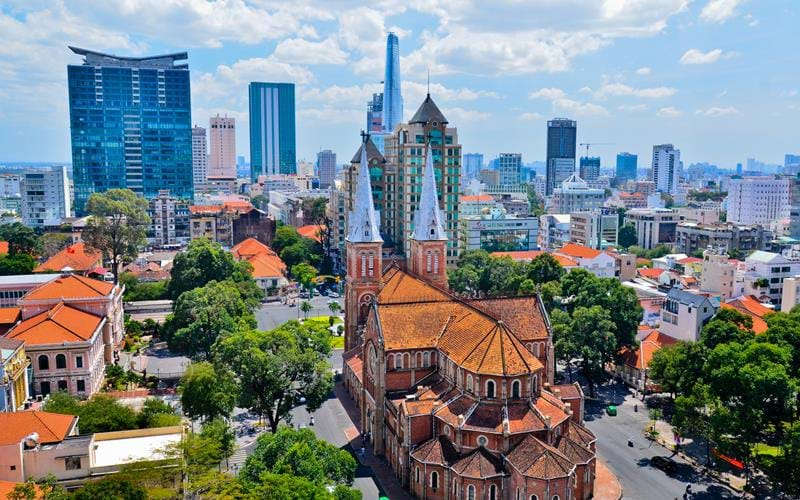
Your sightseeing today takes in the former presidential palace, now known as ‘Reunification Hall’. The 1960s behemoth has been turned into an extraordinary museum where visitors can marvel at the decadent décor installed by the South Vietnamese régime. No less extravagant, though more traditionally Asian, is the resplendent Jade Emperor Pagoda, the loveliest of HCMC’s many Chinese-style temples.
Accommodation Options
Ho Chi Minh City
A full day out to Mekong Delta. Tour the Cai Be floating market and explore the smaller waterways and canals by local boat. Later visit the orchards and local cottage industries.
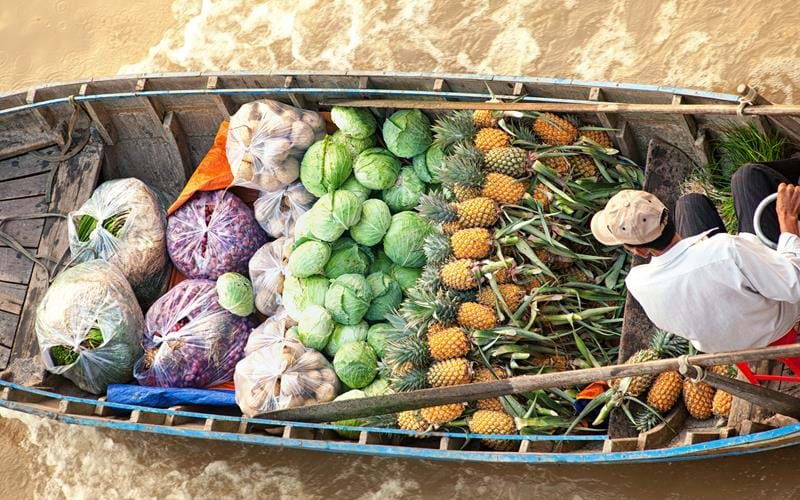
One of the most intensively farmed regions in Asia, the Mekong Delta is also one of the most ethnically diverse – a fact reflected in the rich architectural heritage of the larger towns, many of whose inhabitants live crammed into houseboats on the river, or in stilt houses perched above it. During your excursion you’ll get to experience Delta life at close quarters: field workers in conical straw hats hunched over fields of ripe rice paddy; boats piled high with cargoes of pink dragon fruit; children sluicing water over their buffaloes in the morning, as fishermen cast hand-nets from tiny canoes.
Accommodation Options
Ho Chi Minh City
Transfer to the airport for your onward flight.
Accommodation Options
Group Tour 18 days from £3075 per person
What's included
✓ 17 nights accommodation
✓ Arrival & Departure transfers, Internal travel by road and air
✓ English-speaking guides. Accompanying tour escort when minimum group size is achieved
✓ Breakfast daily. Lunch on day 10. Dinner on days 5, 10
✓ Entrance fees to sites and monuments listed in tour itinerary
2025/2026 tour prices for Discover Indochina
| DEPARTURE DATE | PRICE PER PERSON | SINGLE ROOM supplement | AVAILABILITY | |
| Sat 01 Nov 2025 | £3075 | £965 | Good | |
| Sat 29 Nov 2025 | £3075 | £965 | Good | |
| Sat 17 Jan 2026 | £3145 | £995 | Good | |
| Sat 14 Feb 2026 | £3145 | £995 | Good | |
| Sat 07 Mar 2026 | £3145 | £995 | Good | |
| Sat 04 Apr 2026 | £3145 | £995 | Good |
Places and Experiences in this tour
Plan your Next Adventure
With the Summer almost upon us, now is the time to begin planning your next summer adventures in Asia. Our Travel Specialists are ready to take your call and discuss the adventure you have been dreaming of.
Or call us on 0208 566 3739















